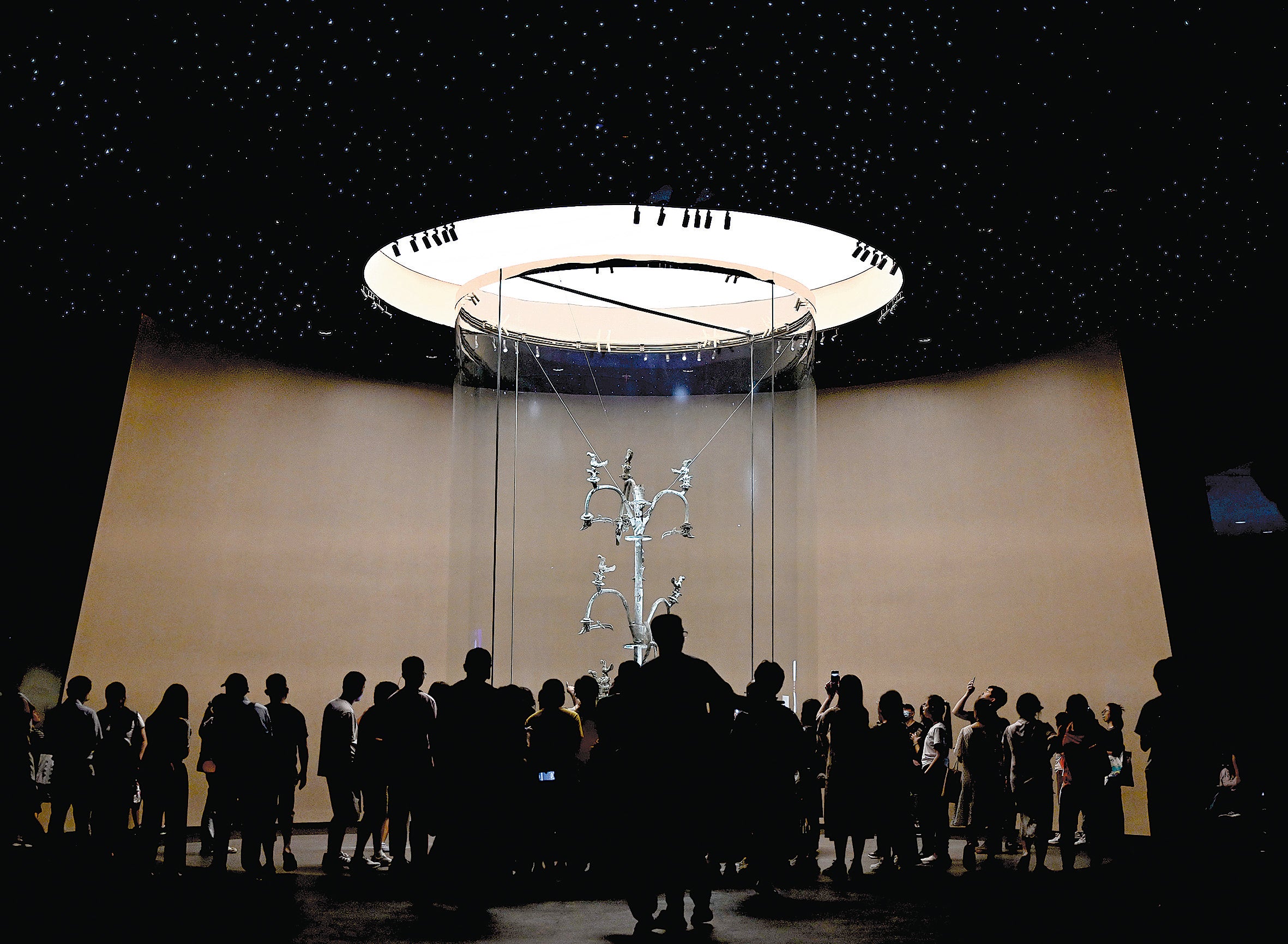New Sanxingdui Museum opens
THE ARTICLES ON THESE PAGES ARE PRODUCED BY CHINA DAILY, WHICH TAKES SOLE RESPONSIBILITY FOR THE CONTENTS

The new Sanxingdui Museum in Guanghan, Sichuan province, began trial operations on July 27, 2023. With a total area of about 585,600 sq ft and an investment of more than 1.4 billion yuan (£153 million), the construction of the museum started in March 2022.
Together with Halls No 1 and No 2 of the old Sanxingdui Museum, the combined facility now forms the Sanxingdui Museum complex.
The new museum has a display area of 236,800 sq ft, with more than 1,500 sets of cultural relics comprehensively and systematically exhibiting the latest findings from archaeological excavations and research at the Sanxingdui Ruins, located 25 miles north of Chengdu, the capital of Sichuan.
The relics include pottery, bronze, jade, gold and ivory. More than 600 of them are being displayed for the first time, including more than 300 newly unearthed items from the No 3 to No 8 sacrificial pits of the Sanxingdui Ruins that have been found since 2020, deputy museum curator Zhu Yarong said.
The newly discovered relics on display include a bronze altar nearly 35 inches tall and a net covering a vessel shaped like a tortoise shell.
The museum is also offering its patrons a more immersive experience with its glasses-free 3D technology, which enables them to view excavation sites from the perspective of archaeologists, Zhu said.
Covering 4.6 square miles, the Sanxingdui Ruins site, on which the museum sits, includes the remains of an ancient city, sacrificial pits, residential quarters and tombs. Scholars believe the site was established 2,800 to 4,800 years ago, and archaeological discoveries show it was a prosperous, highly developed cultural hub.
The site was discovered in 1929 when Yan Daocheng, a local villager, unearthed a pit full of jade and stone artefacts while repairing a sewage ditch at the side of his house.
Since the 1930s, archaeologists have conducted excavations there and had a major breakthrough in 1984 when the remains of large palaces and parts of the eastern, western and southern walls of an ancient city were found. In 1986, two large pits full of bronze artefacts including masks and figurines, were dug up.
The discoveries confirmed the site comprised the ruins of a city that was the political, economic and cultural centre of the Shu Kingdom. In ancient times, Sichuan was known as Shu. The site is one of China’s most important archaeological discoveries in the 20th century.
Chen Xiandan, an archaeologist in Chengdu who took part in excavations at the site in the 1980s, said that before excavation work was carried out, it was thought that Sichuan had a history of about 3,000 years. It is now believed that civilisation in what is now Sichuan goes back 5,000 years.
Since 2020, six new pits next to the first two have been excavated, and artefacts that have been found in them are now on display in the new museum.
Subscribe to Independent Premium to bookmark this article
Want to bookmark your favourite articles and stories to read or reference later? Start your Independent Premium subscription today.